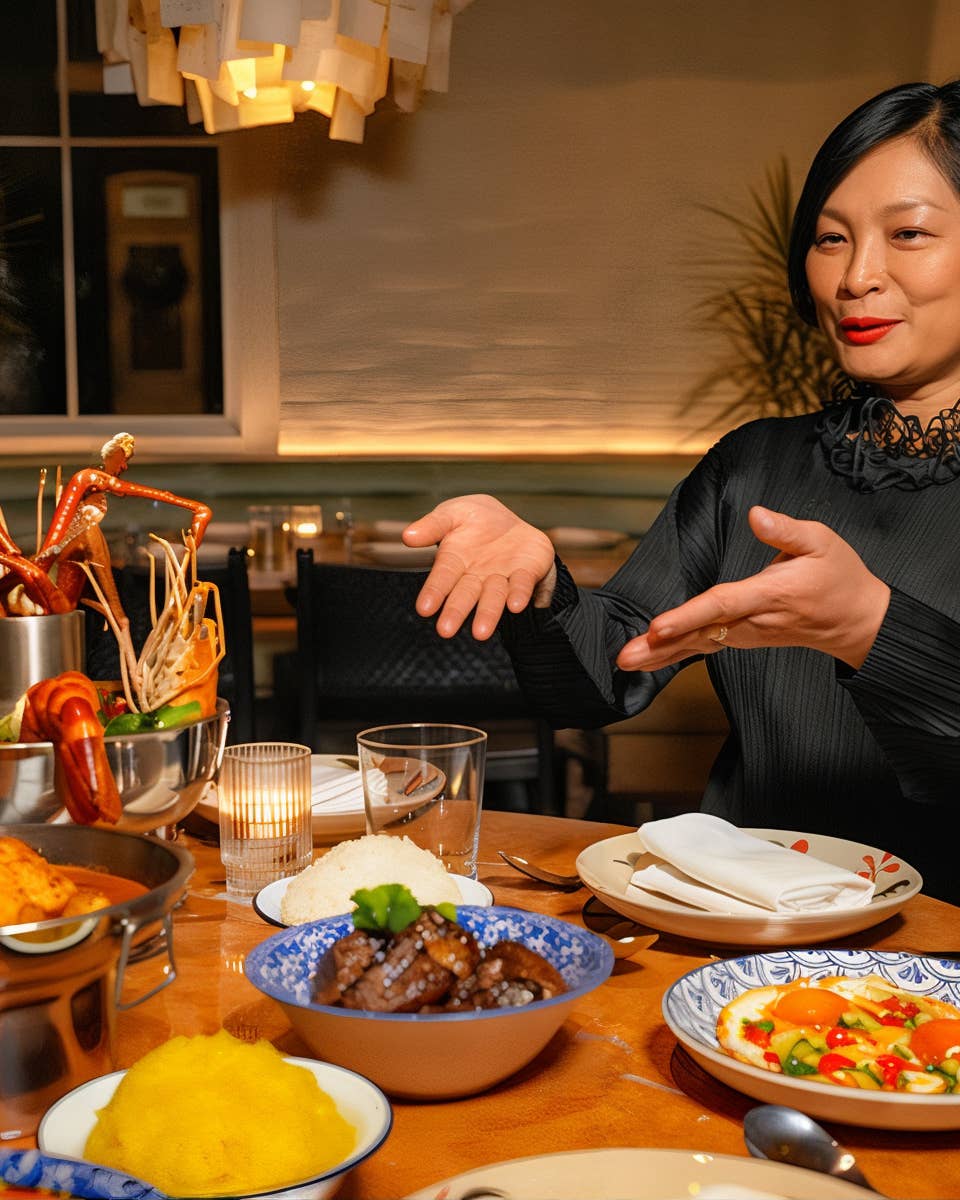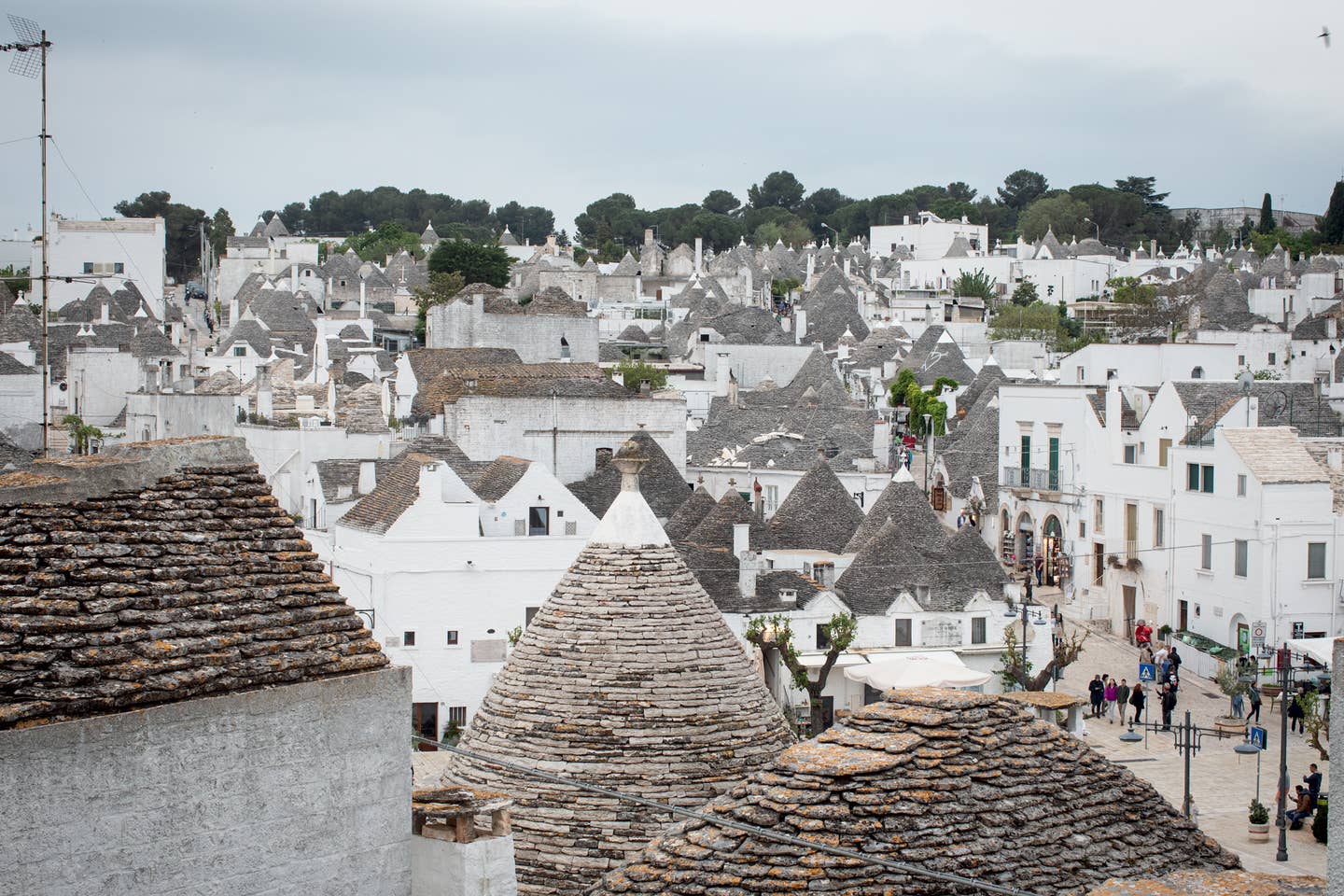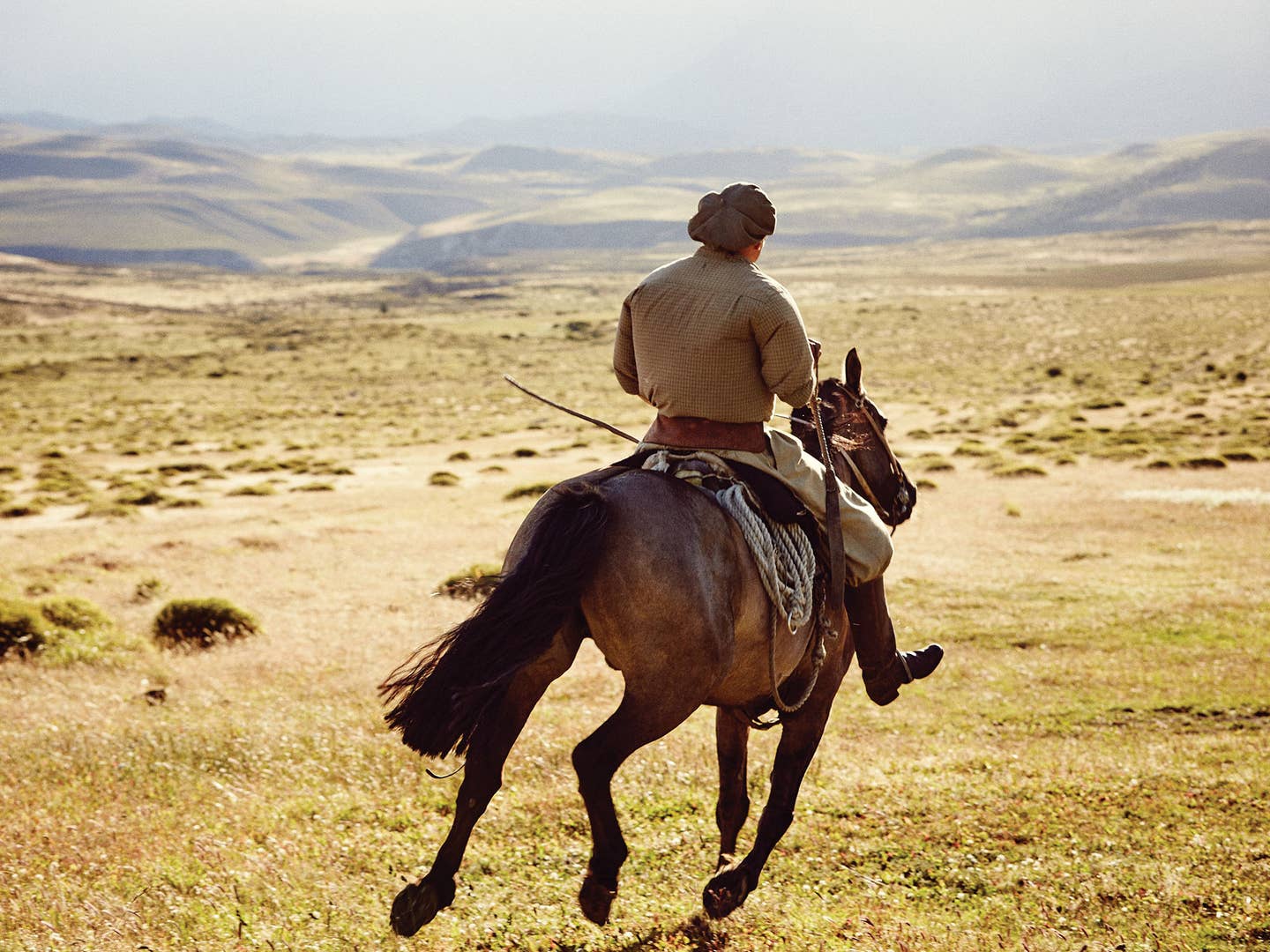
The Epic Food and Landscape of Patagonia
If you’re looking for otherworldly travel destinations, there’s nothing like the windy land of giants. Adam Leith Gollner on the rugged gauchos, inspired cooks, mammoth crabs, and endless beauty at the bottom of the world
Have you heard of the hairy mylodon? An immense, now extinct giant ground sloth, it roamed the fairy-tale lands of Chilean Patagonia until about 10,000 years ago. The mylodon inspired one of the best travel books ever written, Bruce Chatwin's In Patagonia. And here it is now in the town of Puerto Natales, near Last Hope Sound and the mouth of the Mylodon's Cave, commemorated in the form of an enormous sculpture standing 15 feet tall on its shaggy hind legs.
Read more: The Insider's Guide to Patagonia »
That this thing actually existed, that it walked these thorny moonscapes, makes it somewhat easier to digest the theory that unicorns also populated the area during the Pleistocene era.
It's early February, the height of summer, and I haven't yet spotted a sasquatch, although it feels like one could show up at any moment here on the Ruta del Fin del Mundo. This highway at the very southern tip of Chile, at the uttermost end of the hemisphere, has one dominant characteristic: It is exceptionally windy. The Ruta is a desolate, Death Valleyesque stretch of asphalt where the wind comes to get its freak on. It howls away in primal bellows, making you almost catch flight as it lifts your heels. Black-browed albatrosses flip over in the air when it changes direction. Down below, land-bound packs of guanacos, a kind of camel-llama ungulate, munch on wind-ravaged herbs while keeping an eye out for pumas. Slow down to check them out, and they stare back with quizzical raccoon-bandit eyes. The Ruta del Fin del Mundo is the sort of drive that requires side-to-side gawking at the relentless majesty passing by—but you have to stay focused. Several ostrich-size flightless rheas have already leapt across the road in front of me like crazed velociraptors.
Patagonia exists somewhere on the spectrum between real and make-believe. It's a place where you can start the day with a glass of fresh-squeezed raspberry juice, just like the cartoon Moomins do in Moominland, then head out to observe penguins waddling around extraterrestrially in their rookeries, and wind up experiencing a blistering mountaintop sunset that dazes you with the limitlessness of what this world is capable of.
The Patagonian end zone primarily attracts Teva-sandaled nature lovers but also prides itself on satisfying weary-eyed hikers with gargantuan end-of-day meals, fit for giants. The name Patagonia is thought to mean “land of giants” or “land of the big feet.” It dates back to Magellan's arrival here in 1520, when Spanish colonialists claimed that the Tehuelche people they observed were 10 feet tall. That was, it appears, an exaggeration. They were closer to 6 feet, 7 at most—though they do seem to have worn particularly large animal-hide moccasins. Factor in that mylodon, a genuine bigfoot, and you get a place that has always been as outsize as it is fantastical, filling all comers with wonder.
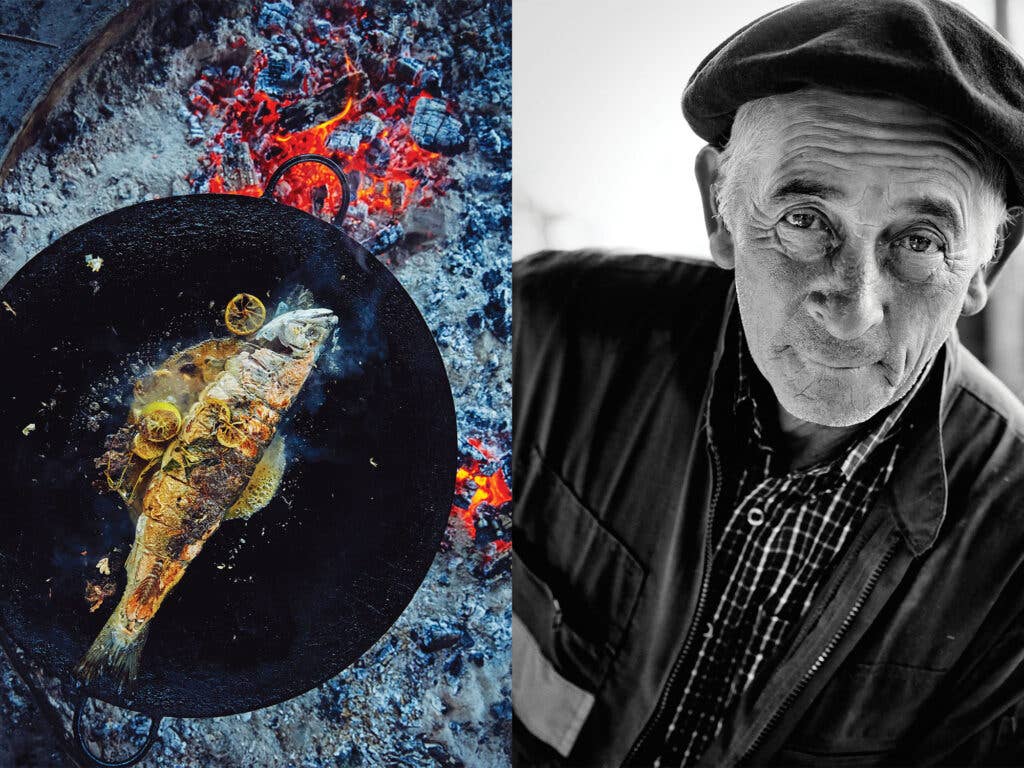
I'm heading north from Punta Arenas toward Puerto Natales and then on to Torres del Paine National Park. Friends who've been here before assured me it's the most beautiful place on earth. I've just started this journey and already it's clear that assessment qualifies as an understatement. The blue-green flatlands stretching out around me are so immensely epic it feels like I'm taking in more visual information than I've ever been able to in a single eyeful before. The colors are kaleidoscopic: mossy pastures, purple lowlands, burnished hayfields. Imagine a prehistoric Montana on LSD and Viagra.
I come across gauchos on horseback tending to flocks of woolly sheep grazing away on the endless expanses. It's just after lunchtime, but the gauchos have already started making dinner, the way cowboys here have always done: whole butterflied lamb stretched akimbo over an open bonfire. The fire will burn for the rest of the day; the meat will cook slowly, ready by the time night falls. I desperately hope I'll find a way to try some gaucho food while I'm here.
Back in the car, a haunting song by the old Chilean folk singer Violeta Parra crackles over the radio. Gracias a la vida, she sings: "Thank you to life, which has given me so much." It's a sense of gratitude I share, incredulous that I've somehow ended up here. The entire wrinkled, smile-lined landscape is so beautiful that I find myself pulling over to the side of the road just to look at things for a little longer. It would be a profound pleasure to do nothing but stare at the wind rustling through the tall grass here for hours. Charles Darwin was more affected by these plains than anywhere else he visited on the voyage of the Beagle. "I can scarcely analyze these feelings," he wrote, "but it must be partly owing to the free scope given to the imagination."
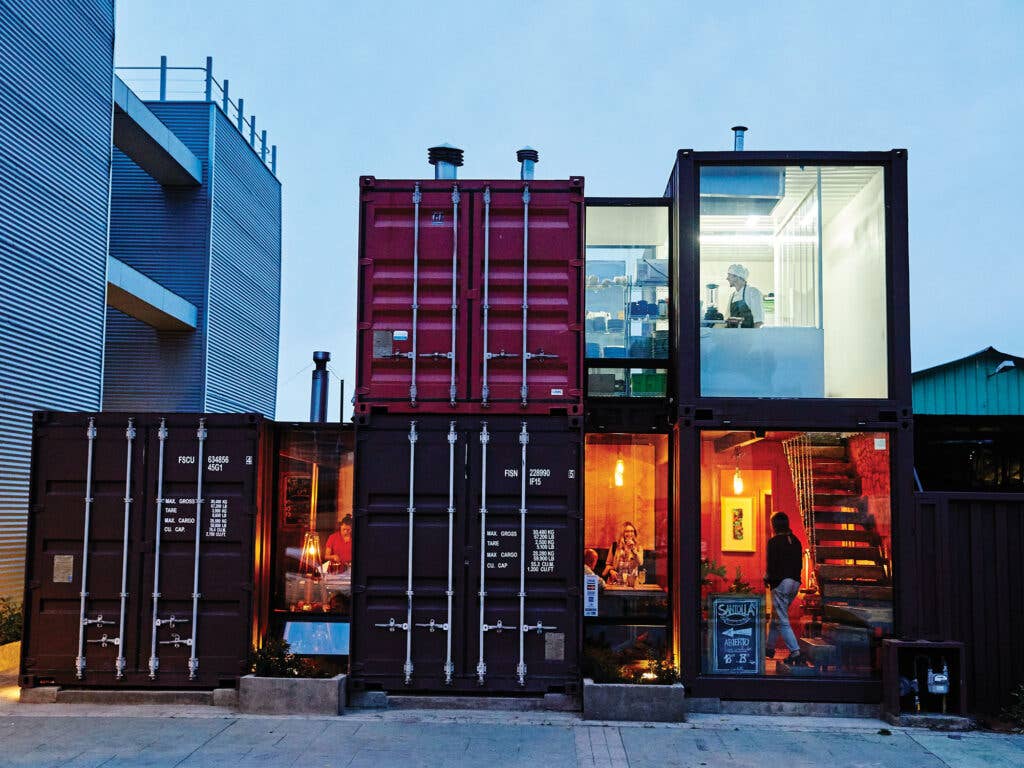
My imagination and I succumb to that free scope when a dreamy blue light settles over the town of Puerto Natales in the early evening. Even in the daytime, there's a vivid ultraviolet dimension to the air here—possibly due to the hole in the ozone layer directly above southern Patagonia—and it magnifies as the sun descends. I'm having dinner at Santolla restaurant, on a small side street in the center of town. Here, they serve immense red Magellan king crabs, which are brought in World's Deadliest Catch style from the icy Antarctic waters off the southern coastline, and are bigger, spikier, and more delicately flavored than any other crustacean I've ever encountered. A few years ago, when king crab exporter Fernando Nuñez and his wife, Isabel, decided to open this restaurant, they called it Santolla, an alternate spelling of centolla, the name for the king crabs in these parts.
Even though it's prime summertime, it's a little too windy for alfresco dining, so I sit next to the big windows at the front of the restaurant, a minimalist structure of reconfigured shipping containers built entirely with recycled materials. Isabel suggests I start with local scallops found underneath glaciers in the impenetrable darkness of nearby fjords. Divers gather them blindly off the ocean floor, she explains. These bivalves turn out to be extraordinarily tender and delicious, especially when paired with a crisp, Granny Smith—inflected glass of Chilean sauvignon blanc.
Dinner in the blue-tinged twilight is proof that food in a place like this can be just as otherworldly as its surroundings. Crabs here at Santolla come in many guises—the sweet claw meat plucked out in advance, or gratinéed into a perfect chupe de centolla (a regional specialty that's a kind of baked crab-custard-chowder-dip), or the classic, carapace-intact crab boil method. I opt for the latter, and it's dazzling—a giant crimson sea-spider whose splayed legs cover the entire tabletop, keeping me occupied and deliriously contented until the blueness of night fades to dark.
Torres del Paine National Park is an hour and a half from Puerto Natales, and the drive there is like cruising through the set of Planet of the Apes. This land sits among the Magellanic subpolar forests, but there aren't many trees here; the wind is too much for them. Their skeletal white remains could be mistaken for forgotten piles of bones. Deeper into the rugged outback, the vistas become increasingly spectacular. The main attraction here is a cluster of mountains known as the Cordillera del Paine. The rocky excrescence pops out of the surrounding lowlands in such astonishing fashion that it's been called the eighth wonder of the world. From a distance, its towers pierce through low-lying clouds like shafts of radiant light. And despite its barrenness, the earth bears forth unexpected treasures, from tart calafate berries to fire-grilled guanaco steaks.
The Mapuche, Patagonia's aboriginals, call themselves "the people of the land," and the Patagonian knack for cooking with the land itself reaches its apogee in their curanto patagónico. Curanto means "hot stone," and involves cooking in a pit with fiery rocks. Slabs of meat, sausages, root vegetables, shellfish, and a potato pancake called milcao are all wrapped in nalca leaves, placed into the hot-stone hole, and then covered in soil. After three or so hours in that subterranean sauna, dinner is served.
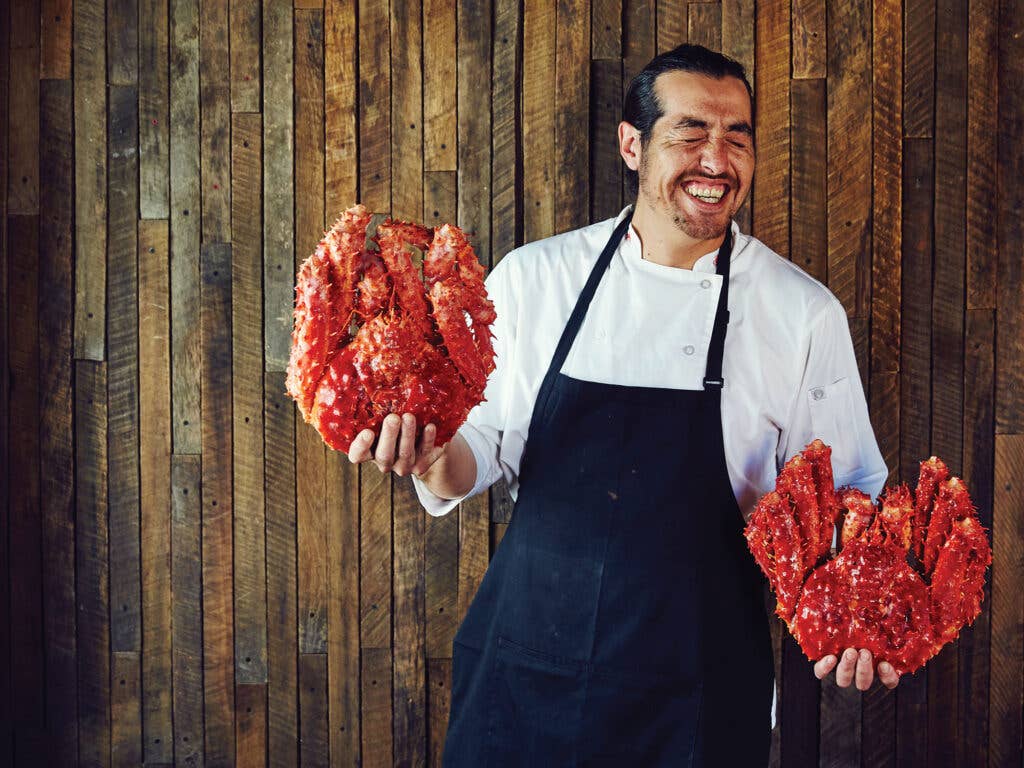
I'm spending the next couple of nights at Awasi Lodge, in gaucho country where cowboys cook using the elements, not unlike the Mapuche. The lodge itself is located on a private reserve next to the park. There's an Arctic chill to the air here, even in summer. The path from Awasi's main building to each of the individual villas is lined with trees covered with creeping mosses. Simply breathing in this pristine mountain air feels healthier than yoga. A massive condor circles slowly above. Turning a corner, I'm greeted by the sight of five white-tailed hares. They take one look at me and immediately dart away in all directions, their tall ears poking out over the long grass.
Throughout these parts, you can see gauchos riding over the untrammeled land on horseback. They're equal parts shepherds, horse-riding instructors, and ranchers. They bring the flocks in, fit horseshoes on mares, and do general handyman maintenance work around the property, as I learn when I meet a couple of them at their ranch. They're wearing green berets and baggy riding pants called bombachas, and they offer me some potent yerba maté that I drink from their communal tin bombilla straw out of a hollowed-out gourd. Nineteenth-century travelers described gauchos as living almost exclusively on maté and steak, and if forced to choose between them, they'd take maté over beef.
The gauchos are employed by a nearby estancia called Tercera Barranca, a modest inn, restaurant, and working ranch. Because Tercera Barranca is on land that was purchased by Awasi, it has become a fundamental part of the experience. One of the older gauchos on the ranch is a man named Juanito Sánchez Velázquez, who has worked there for over 20 years. Velázquez is known for his gifts in the art of cooking whole spatchcocked lambs over an open fire—and luckily for me, he's planning an asado-style cookout that very afternoon. The secret to preparing cordero al palo (whole lamb al asador), he tells me, is to rack the lamb up on a traditional iron cross, and then slowly barbecue it next to the flames. When it's done, seven hours later, Velázquez cuts it into serviceable pieces with a bone-dulled old saw. As we stand there, inhaling the perfume of the embers, feeling the glory of being alive, he hands me a rib—his favorite cut. A single bite justifies the lengths anyone would travel to get here. It's so smoky and salty and fatty and herbal and perfectly fire-charred, it's like devouring the essence of the Patagonian hinterland itself.
The dishes served alongside it are equally interstellar. These are prepared by Velázquez's lover, Carmen Lopez Ruíz, a gold-toothed Chilean Julia Child who runs the kitchen at Tercera Barranca. Just as Velázquez supervises the outdoor asado, Ruíz cooks over a 100-year-old wood-fired stove, turning out rustic food so life-affirmingly good it can actually stand up to this barbecued lamb. Her specialty is pebre—a condiment that's somewhere between a salsa and chimichurri. Hers is essentially a chunky tomato hot sauce mixed with white wine vinegar, sunflower oil, white wine, and a secret ingredient: Traverso brand aji crema (a kind of prepackaged chile pepper ketchup made with aji rojo peppers). When I taste it, it's so unbelievably delicious, I end up eating a half pound or so with the lamb.
Seeing how much I appreciate it, she comes over to explain that pebre is good alone on bread, or in soup, or on sandwiches, or with scrambled eggs, or in a cazuela of beef. As I jot it all down, she shakes her head and calls me mi perro—"my puppy."
Next, she brings me a bit of mote con huesillo—a homely Chilean dessert of barley with dried peaches in a sweet syrup. The barley is boiled with the rehydrated peaches, cinnamon, and dried tangerine peel. It's like granola that's been transubstantiated into a summery peach promised land. Ruíz tells me that she remembers eating this exact same recipe with her family when she was 9 years old.
She follows the mote with a classic leche asada—a kind of baked crème caramel—flan type thing that she prepares in a banged-up old powder-blue lasagna tray. Like everything else here, it's full of soul.
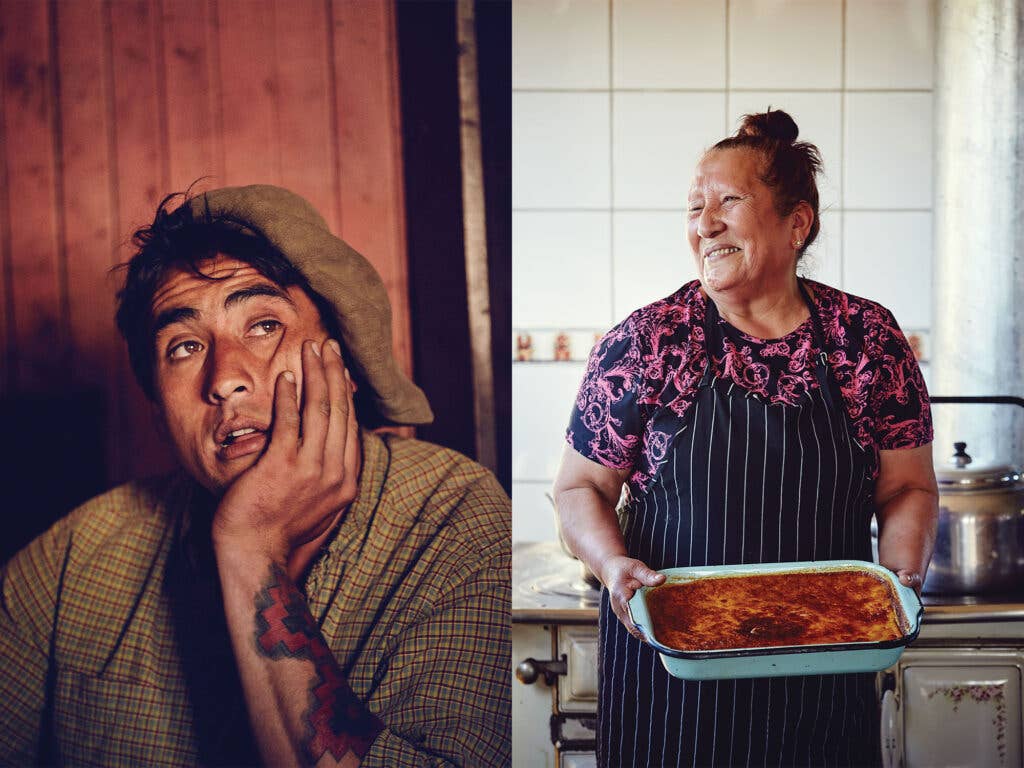
The food at Awasi Lodge proper is much more haute than homey, but true to its homeland. Chef Federico Ziegler, originally from Argentina, has dedicated himself to understanding the cuisine of Patagonia, the results of which manifest in updated and innovative dishes like a playful guanaco-meat completo hot dog topped with mashed avocados; and a crunchy iceberg salad scattered with herbs and flowers, a mirror of the landscape but also a riff on a dish his mother once made.
Ziegler is also confident enough to make what he refers to as "grandmother cooking"—the sort of down-home comfort food that Ruíz and Velázquez prepare. His lunchtime special of cancato, trout stuffed with sausage, cheese, tomato, onion, and oregano, is so good largely because it's simple and reflective of the land's bounty. Ziegler's spit-roasted lamb shoulder comes impaled on a tree branch—a visually arresting presentation that is just as fantastic as Velázquez's whole parilla lamb. They're using the same source material, after all; it happens to be wandering around freely all over the place.
The cuisine here is of the land, but it isn't stuck in time; it has always been shaped by outside influences. The original Mapuche traditions and ingredients like merkén chiles and charquicán, a dried meat stew, have been melded with Spanish and Peruvian inflections but also a major German influence. In the 19th century, industrious germanochilenos cleared and settled the land. Their imprint is clear in dishes like boiled pork knuckles washed down with a stein of Kunstmann Weissbier and a slice of Kuchen.
La zona austral, as this part of the country is known, is a place for hearty eating, a place where the food culture essentially mirrors the wilderness, a place where the intersections between nature and kitchen come into focus when you dine in its element.
Guests often picnic in the reserve with fare prepared by Ziegler, but simply to eat inside the spacious dining room at Awasi, looking out the immense windowpanes toward Torres del Paine, is to experience the precise quality that defines this place: a unity between the terrain and the cooking.
This unity, inherently romantic, lends a palpable “Patagonia is for lovers” vibe, and it's with a certain heaviness of heart that I check out of Awasi and make my way into the aorta of nature itself.
The park is carpeted with golden pampas grass and meadows sprouting ancient flora of a hypervivid green. The alkaline lake Sarmiento is surrounded by gray-white mounds of bacterial deposits—some of them so big that they've become caves in which wild pumas make their homes. The towers seem to have their own private ecosystem, which is constantly changing: now a moody, storm-darkened fortress; now a heavenly white cloudland; now a catch-me-if-you-can emerald city playing hide-and-go-seek with the sun.
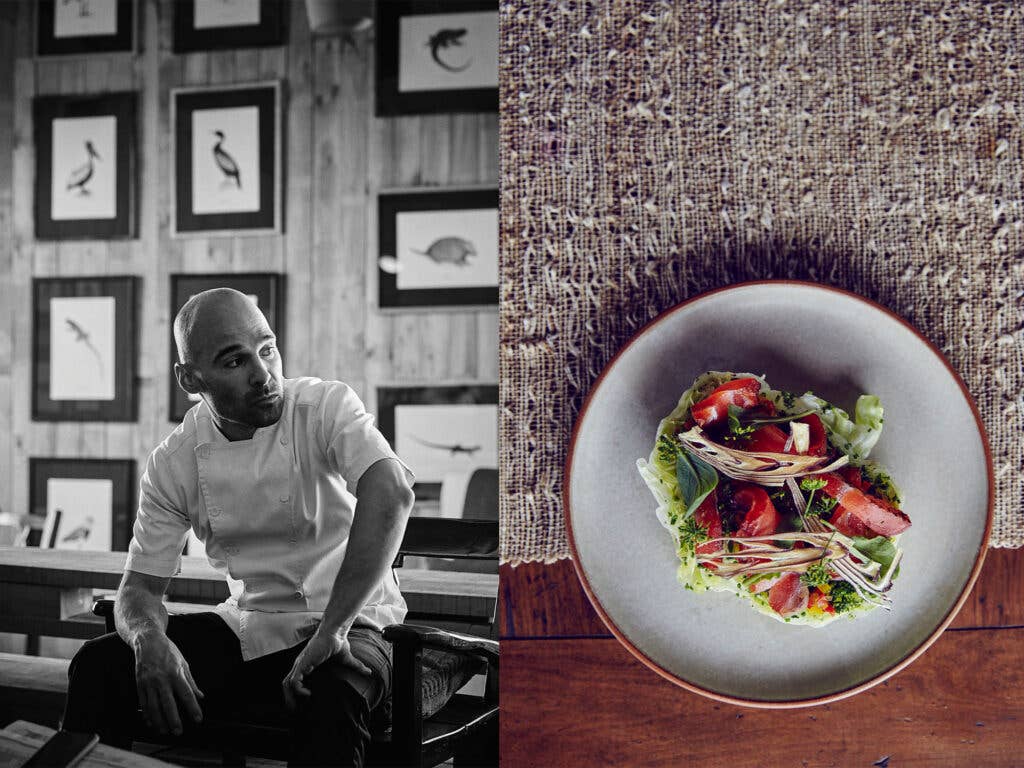
The dreamlike, poetic quality of Patagonian food emanates from the earth itself—and hiking through the park brings everything into relief. Torres del Paine means Towers of Blue. Paine is the Tehuelche word for "blue"—and it must refer to the particular shade seen in the lakes beneath the cordillera. This blue is what you come here to feel. The blue and the wind.
Forget the highway; this park is the windiest place I've ever been. You can just about lean straight into the wind and not fall over. It rips untethered through its lunar paradise, more intense the higher you go. This wind redefines the idea of being blown away by something. I huddle on the cliffside, taking notes about man in nature and holding on to my glasses so they don't get whipped into the ether.
Raw wind courses through the grasslands below like fleet hordes of mink. Beyond the roaring, you can see the wind here. There it is: in the rocks, in the reeds, in the air. This is its dominion. You are a guest in its Patagonian home now. This is where all wind comes from. This is where it's born.
Recipes from Patagonia
After the Snow Cocktail
With a base of pisco, a Chilean spirit distilled from the country’s native grapes, the After the Snow, a fresh sour cocktail, can be found at the Awasi Lodge in Patagonia. Laced with celery and grapes, which are muddled and hidden under a drift of crushed ice, the drink has a brisk, vegetal note as fresh and delicate as spring’s arrival. Get the recipe for After the Snow Cocktail »
Iceberg Wedge with Lemon-Parsley Dressing
The classic wedge with a zesty upgrade. Get the recipe for Iceberg Wedge with Lemon-Parsley Dressing »
More Patagonia
Keep Reading
Continue to Next Story








